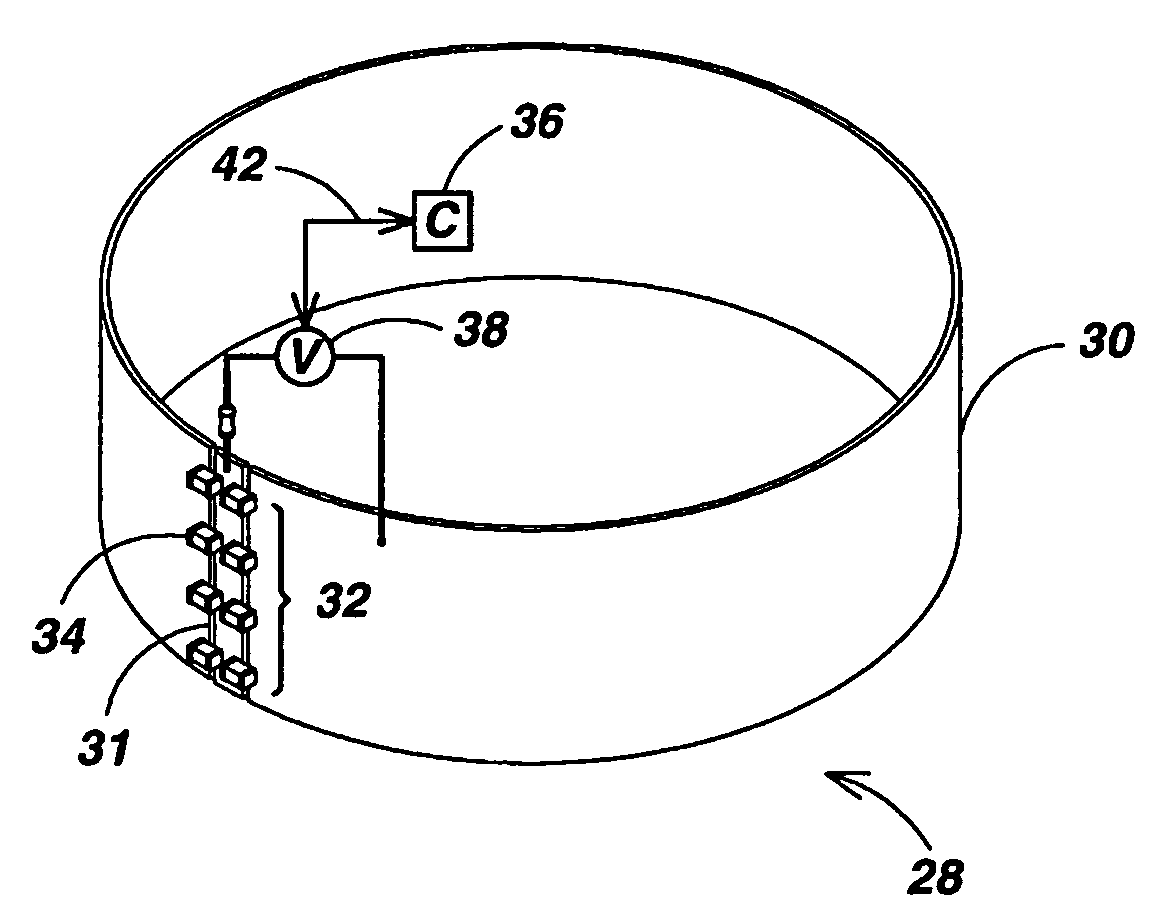Compact self-tuned electrical resonator for buried object locator applications
a self-tuned, electrical resonator technology, applied in the direction of instruments, using reradiation, waveguide devices, etc., can solve the problems of affecting the comfort and convenience of residents, messy and expensive cleanup efforts, and serious injury and property damage, and achieves low equivalent series resistance (esr), high magnetic field output, and improved efficiency and induced output power
- Summary
- Abstract
- Description
- Claims
- Application Information
AI Technical Summary
Benefits of technology
Problems solved by technology
Method used
Image
Examples
embodiment 126
[0062]FIG. 7A is a perspective view of a resonator embodiment 124 of this invention employing a capacitor embodiment 126 consisting of a plurality of capacitor rings 126A-B and a conductive inductor embodiment 128 consisting of the thick conductors in capacitor rings 126A-B and a plurality of wire rings 128A-B. To prevent current flow and power loss within the relatively slight wire rings 128A-B, a gap exemplified by the gap 129 is disposed in each. Capacitor ring 126A, for example, includes a plurality of MLCC capacitors C, substantially as shown in the schematic diagram of FIG. 7B. A ferromagnetic core 130 is disposed to increase the resonator inductance value L and the separate bias voltage supply 132 is connected with a plurality of isolation resistors R as necessary to apply a bias voltage across the MLCC capacitors C responsive to commands received from the tuning controller 134 on the bus 136. A separate excitation generator 138 energizes the adjacent excitation coils 140 to ...
embodiment 208
[0070]FIG. 12 is a front view of an inductive clamp embodiment 208 incorporating the resonator of this invention. Inductive clamp 208 allows a user to apply a signal to a buried conductor by directly clamping to an accessible above-ground segment of a buried conductor (not shown) when a conductive connection is impractical. Inductive clamp 208 has a pair of C-shaped jaws 210 and 212, each connected to a corresponding handle 214 and 216, respectively. Handles 214-216 may be gripped to open jaws 210-212 by overcoming the force of a leaf spring assembly (not shown). Each jaw and handle element, such as jaw 210 and handle 214, may be made of integrally molded plastic halves held together by screws exemplified by the screw 218. Each jaw 210-212 holds a semi-circular ferromagnetic core 220A-B (only partially visible in cutaway) made of laminated layers of a ferromagnetic material, such as that sold under the trademark Superperm 80™, the layers being separated by suitable insulation materi...
PUM
 Login to View More
Login to View More Abstract
Description
Claims
Application Information
 Login to View More
Login to View More - R&D
- Intellectual Property
- Life Sciences
- Materials
- Tech Scout
- Unparalleled Data Quality
- Higher Quality Content
- 60% Fewer Hallucinations
Browse by: Latest US Patents, China's latest patents, Technical Efficacy Thesaurus, Application Domain, Technology Topic, Popular Technical Reports.
© 2025 PatSnap. All rights reserved.Legal|Privacy policy|Modern Slavery Act Transparency Statement|Sitemap|About US| Contact US: help@patsnap.com



